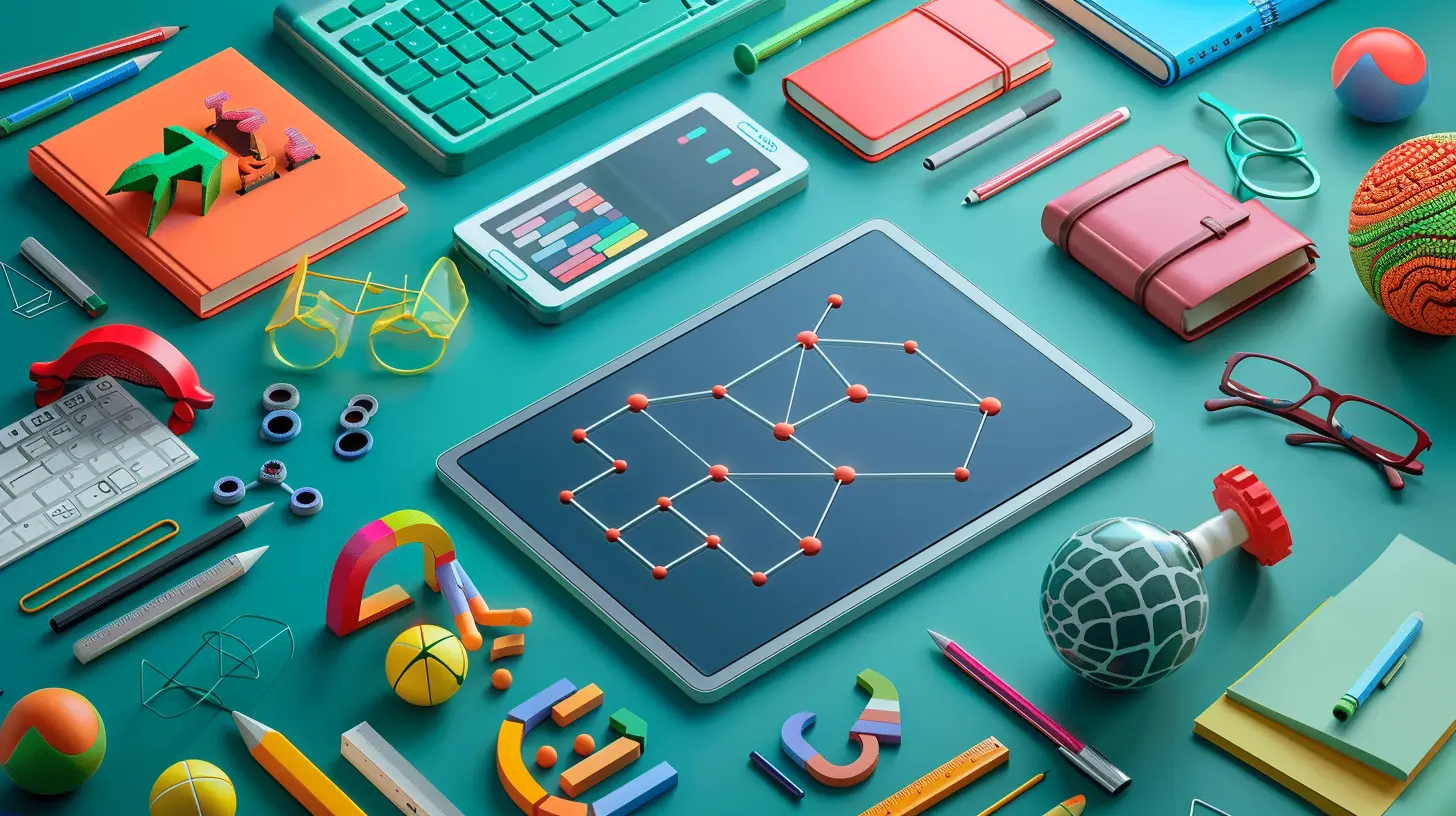The Role of Technology in Enhancing Math Education
22 April 2025
Mathematics—the universal language of logic, patterns, and precision—has often been both a source of fascination and frustration for students. But what if I told you that technology is changing the game, turning numbers and equations into an engaging, interactive experience rather than a dreaded subject?
Gone are the days of monotonous textbooks and endless rows of numbers scribbled on paper. With the right tech tools, math education is becoming more accessible, fun, and effective than ever before. Let’s dive into how technology is revolutionizing the way we teach and learn math!

The Evolution of Math Education: From Chalkboards to Smartboards
Remember the old-school chalkboards? Teachers would fill them with equations, and students would painstakingly copy them down, often struggling to keep up. Then came the whiteboards, overhead projectors, and finally, the digital revolution.Today, classrooms are equipped with smartboards, tablets, and online learning platforms that make math more interactive than ever. Instead of being confined to static numbers on a page, students can visualize mathematical concepts, manipulate figures in real-time, and even gamify their learning experience.
But how exactly does technology improve math education? Let’s break it down! 
How Technology Enhances Math Learning
1. Interactive Learning: Bringing Math to Life
Math has a reputation for being intimidating. But what if solving equations felt more like an adventure? Thanks to technology, we now have interactive apps, 3D models, and simulations that make math feel more like a hands-on experience rather than a passive lecture.- Augmented Reality (AR) & Virtual Reality (VR): Imagine solving geometry problems by actually interacting with 3D shapes in virtual space. AR and VR are making abstract concepts more tangible.
- Touchscreen Tablets & Smartboards: Instead of reading about a formula, students can manipulate graphs and interact with numbers in real-time.
These tools create an immersive learning experience that helps students grasp concepts faster and retain them longer.
2. Gamification: Turning Math into Playtime
Who said math has to be boring? One of the biggest breakthroughs in math education is gamification—turning learning into a game.- Math Apps & Online Games: Platforms like Prodigy, DragonBox, and Khan Academy turn math problems into challenges, quizzes, and adventures.
- Rewards & Leaderboards: By incorporating points, badges, and leaderboards, students get motivated to practice math voluntarily.
When learning feels like play, students are more engaged, and math anxiety takes a backseat.
3. AI-Powered Personalized Learning
Every student learns at their own pace, and artificial intelligence (AI) is making it easier to tailor education to individual needs.- Adaptive Learning Platforms: Tools like DreamBox and ALEKS analyze a student’s strengths and weaknesses and provide customized lessons.
- Instant Feedback & AI Tutors: Gone are the days of waiting for teachers to grade homework. AI-powered tutors provide instant feedback, helping students correct mistakes in real-time.
This means no one gets left behind, and learning gaps are addressed immediately rather than accumulating over time.
4. Online Math Resources: Learning Beyond the Classroom
The internet has opened up a treasure trove of math resources, making learning accessible anytime, anywhere.- YouTube Tutorials: Channels like Numberphile, 3Blue1Brown, and PatrickJMT simplify complex math concepts in engaging ways.
- Online Courses & MOOCs: Platforms like Coursera, Udemy, and Khan Academy allow students to learn math at their own pace from world-class educators.
- Math Solver Apps: Apps like Photomath and Wolfram Alpha allow students to scan a math problem and receive step-by-step solutions.
With these resources, students are no longer limited to what’s taught in the classroom—they can explore, practice, and excel at their own convenience.
5. Collaboration & Peer Learning Through EdTech
Math isn't just about solving problems in isolation; it's also about discussions, debates, and teamwork. Technology has made it easier than ever for students to collaborate and learn from one another.- Online Study Groups & Forums: Platforms like Discord, Reddit, and Stack Exchange allow students to seek help, share solutions, and discuss math problems in real-time.
- Cloud-Based Tools: Google Docs, Microsoft OneNote, and other collaborative tools let students work on math problems together, even when miles apart.
By fostering collaboration, students gain new perspectives and enhance their problem-solving skills. 
The Future of Math Education with Technology
So, what’s next? With advancements in artificial intelligence, virtual reality, and even brain-computer interfaces, the future of math education is looking incredibly exciting.- AI Teachers: Imagine having an AI tutor available 24/7, personalized to your exact learning needs.
- Immersive Virtual Classrooms: With VR, students could "walk" through mathematical landscapes, visualizing numbers in ways never imagined.
- Holographic Teaching Assistants: A future where interactive holograms guide students through complex math problems sounds like science fiction—but it’s closer than we think!
Technology isn't just making math easier; it's making it magical. 
Final Thoughts: Math + Tech = A Winning Formula
Math education has long been seen as a formidable challenge, but with the power of technology, it’s transforming into an engaging and dynamic journey. Interactive tools, gamification, AI tutors, and online resources are shifting math from a rigid subject to an exciting exploration of numbers and logic.Not every student learns the same way, and technology is helping bridge the gaps, catering to different learning styles and needs. Whether you're a teacher, student, or parent, embracing these tech-driven tools can make a world of difference.
So, the next time you find yourself struggling with an equation, just remember—there’s probably an app, game, or AI-powered tutor ready to help. Math is no longer a mountain to climb; it’s a puzzle waiting to be solved. And with the right tech, solving it can be a whole lot of fun!
all images in this post were generated using AI tools
Category:
Math SkillsAuthor:

Madeleine Newton
Discussion
rate this article
7 comments
Merida Mahoney
Technology transforms math education from daunting to delightful. By integrating interactive tools and apps, we’re not just teaching equations but fostering critical thinking and problem-solving skills. Let’s embrace this digital evolution and turn math from a subject of fear into a realm of exploration and creativity!
May 8, 2025 at 8:45 PM

Madeleine Newton
Absolutely! Embracing technology not only makes math more engaging but also equips students with essential critical thinking and problem-solving skills. It truly transforms math into an exciting journey of discovery.
Lira McFarland
Exciting insights! Technology truly transforms math education into a fun adventure!
April 30, 2025 at 4:18 AM

Madeleine Newton
Thank you! I'm glad you found the insights exciting—technology indeed makes math more engaging and interactive for learners!
Sari Rivera
Great insights! Embracing technology in math education truly empowers both students and teachers, making learning more engaging and accessible. Looking forward to seeing how this evolves in classrooms!
April 28, 2025 at 12:28 PM

Madeleine Newton
Thank you! I'm excited to see how technology continues to transform math education and enhance the learning experience for everyone.
Isadora McFarlin
Embracing technology can truly empower students to love learning math.
April 26, 2025 at 7:52 PM

Madeleine Newton
Absolutely! Technology not only makes math more interactive but also personalizes the learning experience, fostering a deeper appreciation for the subject.
Lexi McGhee
Technology significantly enhances math education, fostering engagement and understanding.
April 24, 2025 at 12:25 PM

Madeleine Newton
Thank you for your comment! I completely agree—technology plays a crucial role in making math more engaging and accessible for students.
Wolf Malone
Math: now with extra digits and fewer tears!
April 23, 2025 at 11:38 AM

Madeleine Newton
Absolutely! Technology streamlines math learning, making concepts clearer and reducing frustration.
Otto Edwards
Technology is revolutionizing math education, making learning more interactive and accessible. By embracing innovative tools, educators can empower students to explore concepts deeply, engage in collaborative problem-solving, and develop a lifelong love for math. Let’s harness this potential and inspire the next generation of thinkers!
April 22, 2025 at 7:24 PM

Madeleine Newton
Absolutely! Technology opens up new avenues for engagement and understanding in math education, fostering collaboration and a deeper appreciation for the subject. Let's continue to embrace these innovations for the benefit of future learners!
MORE POSTS

The Role of School Leadership in Promoting Mental Well-being

The Connection Between Physical Activity and Cognitive Skill Development

Building Public Speaking Confidence and Skills

The Importance of Diversity and Inclusion in Colleges

Setting Boundaries to Avoid Student Burnout

Reducing Anxiety in High-Pressure Academic Environments